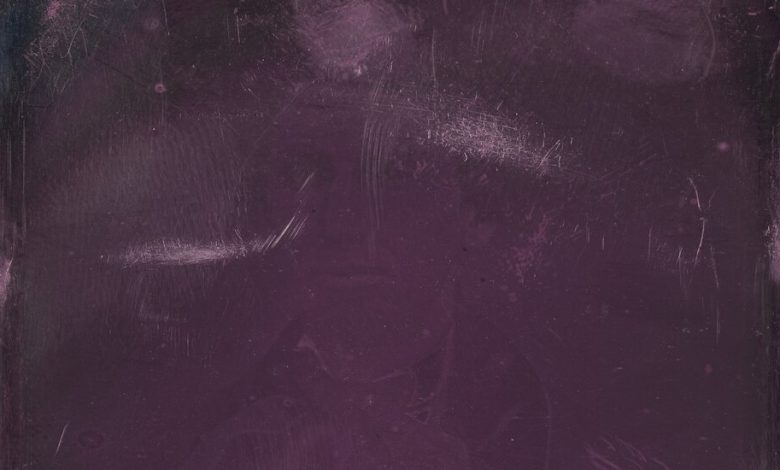If You Could Have One Superpower …

INVISIBILITY: The History and Science of How Not to Be Seen, by Gregory J. Gbur
Gregory J. Gbur’s history devotes not a single sentence to what popular novels and movies suggest is the driving motivation for pursuing invisibility: the ability to see naked people. As early as Eliza Haywood’s “The Invisible Spy”(1754) writers have been worrying, or exulting, about the possibility of using invisibility to pry into “dressing rooms, cabinets and private alcoves”; even H.G. Wells’s imperious Invisible Man is not above stealing the clothing of his harassers, forcing them to pursue him naked through the village square. Nor does “Invisibility” dwell on the temptation to commit undetected acts of larceny and blackmail — espionage is invoked — but it does discuss one of the earliest parables of invisibility in Western civilization.
In “The Republic,” Plato tells the story of the shepherd Gyges, who discovers a gold ring that renders its wearer invisible. As soon as Gyges confirms the ring’s effectiveness, he goes to work: He infiltrates the royal court, seduces the queen, conspires with her, murders the king and takes the kingdom. “No man,” writes Plato, if offered the gift of invisibility, “is of such an iron nature that he would stand fast in justice.” In Plato’s telling the story is a parable about the tension between virtue and free will, but it can be read more narrowly as a summation of human attitudes toward invisibility. If you can figure out how to be invisible, you can rule the world.
Gbur, a professor of physics and optical science at the University of North Carolina at Charlotte, begins his history with what, for readers unversed in the academic literature of invisibility, will be a startling revelation: “The first scientific papers describing the physics of invisibility cloaks were published in 2006, and they were widely and correctly regarded as revolutionary for physics.” Gbur ends his book with what, for readers of the intervening pages, will be another startling revelation: “Don’t expect invisibility cloaks anytime soon.” It is possible, he adds, that the manifold challenges involved “will never be fully overcome.” In between these equivocating if not entirely contradictory assertions lies a dutiful scientific history, peppered with brief, utilitarian discussions of the fiction of invisibility. The science of invisibility, the lay reader ruefully comes to realize, is the science of light.
Most of “Invisibility” is devoted to the discoveries of Isaac Newton, Ernest Rutherford, Michael Faraday, Max Planck, Albert Einstein and other luminaries of high school physics syllabuses. In the first three-quarters of the book we learn much about the differences between constructive interference and destructive interference, longitudinal and transverse waves, the uniqueness of the inverse scattering problem and the non-uniqueness of the inverse source problem. We learn about the astronomer William Herschel’s early career as a church organist and that the physicist Thomas Young read the Bible twice through by the age of 4. But scientific invisibility is mostly invisible from the narrative — apart from the occasional portentous MacGuffin — until the chronology reaches 1975.
The first academic paper about an invisible object was roundly ignored, and for good reason. Published in the Journal of the Optical Society of America, it described a theoretical object smaller than the wavelength of light — a sphere the size of a speck of dust — that would not scatter electromagnetic waves projected at it. The study was subsidized by the paint industry, which had an interest in “the effect of microvoids on the hiding power of paints.” It is not until the mid-1990s that Gbur arrives at the genesis of “modern invisibility physics.”
Researchers realized that it is possible to design synthetic materials that cause reflected electric and magnetic waves to cancel each other out. To do so, it is necessary to sculpt, with excruciating precision, three-dimensional structures a tenth of a billionth of a meter long. This is not currently possible. Such findings have nevertheless led to a series of imperfect cloaking devices and optical illusions that work partially, or at microscopic scale, or theoretically. Further progress has been made in related wave-cloaking fields: thermal cloaks, acoustic cloaks, static electricity cloaks. In 2012, researchers designed a series of cylindrical structures that, when buried in the ground around a building, would protect it from earthquakes by converting seismic waves into explosions of sound and heat. In 2016, researchers showed that trees planted in certain formations would serve the same end: an earthquake-canceling forest. Next came the concept of an “invisible city” — a metropolis designed to be undetectable to seismic waves.
The science of invisibility remains largely theoretical and abstract. It is in the literature that the field comes alive, and Gbur may be the world’s leading expert on invisibility fiction. His book includes both a bibliography and an invisibibliography that despite running several dozen entries long is, as Gbur cheerfully admits, incomplete, “considering how many stories I found through a cursory browsing of old pulp fiction magazines.” Gbur’s interest in invisibility fiction is chiefly scientific in nature. He is more concerned with descriptions of fictional invisibility mechanisms than in the ways authors use the concept to examine themes of free will, desire and fear of the unknown. But it seems worth noting that the dominant tone of invisibility literature is abject terror.
In stories like Guy de Maupassant’s “The Horla,” Fitz James O’Brien’s “What Was It?” and Ambrose Bierce’s “The Damned Thing,” characters are haunted by demonic figures of unknown providence and supernatural strength or intelligence. Logical explanations are fruitless and ultimately inconsequential. The less known about these phantoms, the better. The tragedy, in these stories, lies in the original sin of such beings’ existence. Once you let them in, there is no escaping them; better that they were never born. If these authors have anything to say to future generations of invisibility scientists, it is this: Stop before it’s too late.
Nathaniel Rich is the author, most recently, of “Second Nature: Scenes From a World Remade.”
INVISIBILITY: The History and Science of How Not to Be Seen |By Gregory J. Gbur | 280 pp. | Yale University Press | $30




